India's Most Popular Somnath Temple- Everything You Need To Know
By: Priyanka Maheshwari Sun, 06 Aug 2023 4:41:17
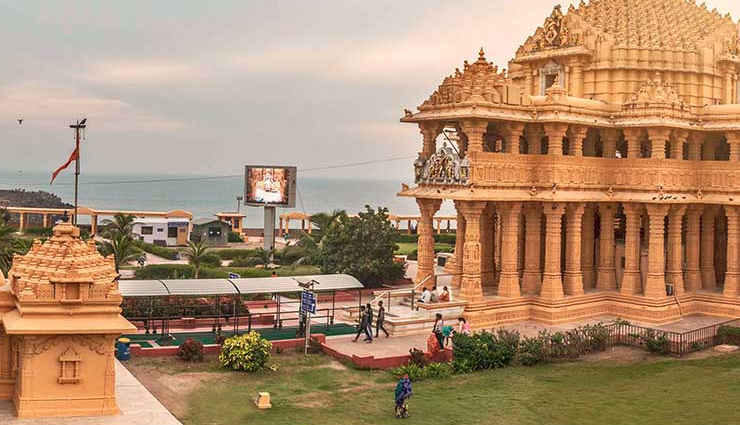
The Somnath Temple is a historically significant and revered Hindu temple located in Prabhas Patan near Veraval in the Saurashtra region of Gujarat, India. It is dedicated to Lord Shiva and is one of the twelve Jyotirlingas, which are considered to be the most sacred abodes of Lord Shiva.
Key points about the Somnath Temple:
- History: The temple's history is steeped in legend and mythology. It is said to have been originally built by Lord Soma (the Moon God) himself, and later reconstructed by various rulers and dynasties over the centuries.
- Destruction and Reconstruction: The temple faced repeated invasions and destruction, notably by foreign invaders like Mahmud of Ghazni in 1026 CE and later by various Muslim rulers. Despite these attacks, it was consistently rebuilt by devout Hindu rulers and communities.
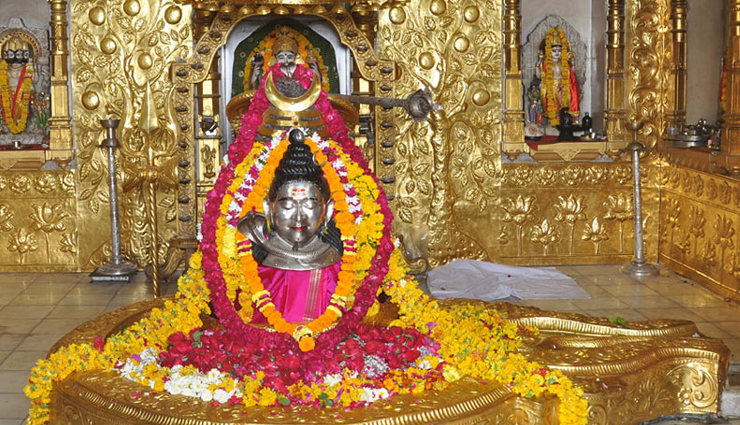
- Symbolism: The Somnath Temple holds immense cultural and historical significance for Hindus. It is often seen as a symbol of resilience and devotion, having withstood centuries of challenges and invasions.
- Architecture: The temple showcases a blend of architectural styles due to its various reconstructions over time. It features intricate carvings, sculptures, and traditional temple architecture, reflecting the artistic achievements of different eras.
- Jyotirlinga: The temple is home to one of the twelve Jyotirlingas of Lord Shiva. A Jyotirlinga is considered a divine, self-manifested form of Lord Shiva, and each of the twelve Jyotirlingas is believed to be particularly holy.
- Pilgrimage: The Somnath Temple is an important pilgrimage site for Hindus, attracting devotees from all over India and beyond. It holds special significance during the Mahashivaratri festival when large numbers of pilgrims visit the temple to offer prayers and seek blessings.
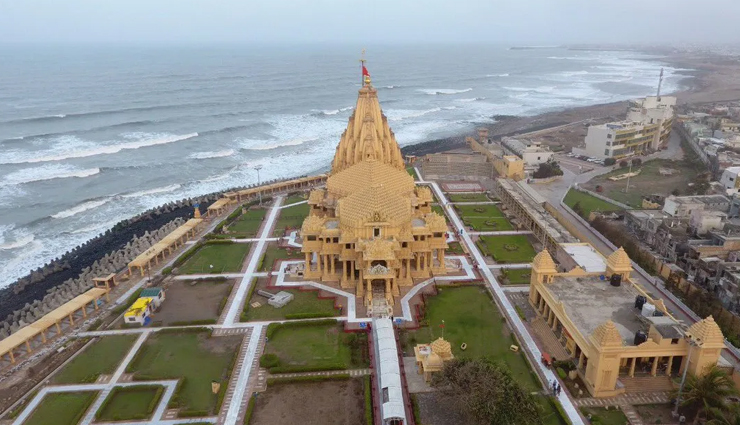
- Renovation and Modernization: In recent times, the temple has been renovated and modernized to enhance its facilities for pilgrims. The restoration work has aimed to maintain the historical and cultural integrity of the site.
- Tourism: The temple complex is not only a spiritual center but also a popular tourist destination due to its historical significance and architectural beauty. The serene coastal location adds to its appeal.
Architecture of Somnath Temple
The architecture of the Somnath Temple is a splendid amalgamation of various styles and periods due to its multiple reconstructions over the centuries. The temple's design showcases intricate craftsmanship, exquisite carvings, and a profound sense of devotion. Here are some key architectural features:
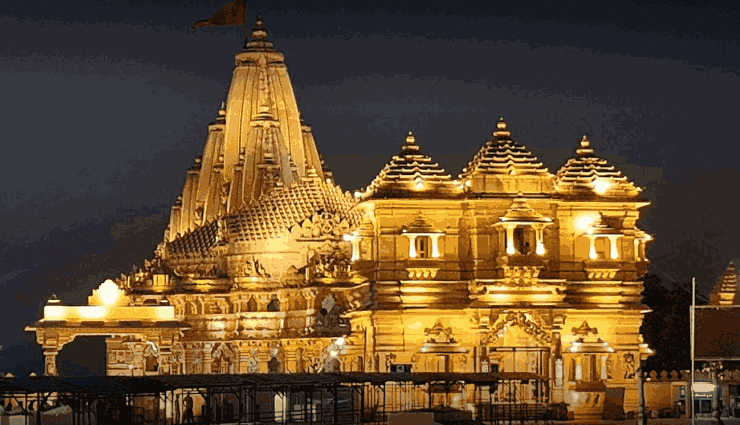
- Temple Complex: The Somnath Temple complex consists of multiple structures, including the main sanctum housing the Jyotirlinga, as well as mandapas (pillared halls), porches, and corridors.
- Main Sanctum: The sanctum sanctorum of the temple enshrines the Jyotirlinga, the sacred representation of Lord Shiva. This core structure typically reflects a simple yet powerful design that centers on the divine presence.
- Carvings and Sculptures: Intricate carvings and sculptures adorn the temple's walls, pillars, and ceilings. These carvings often depict mythological stories, scenes from Hindu epics, and various deities. The sculptures showcase the artistic mastery of the craftsmen of different eras.
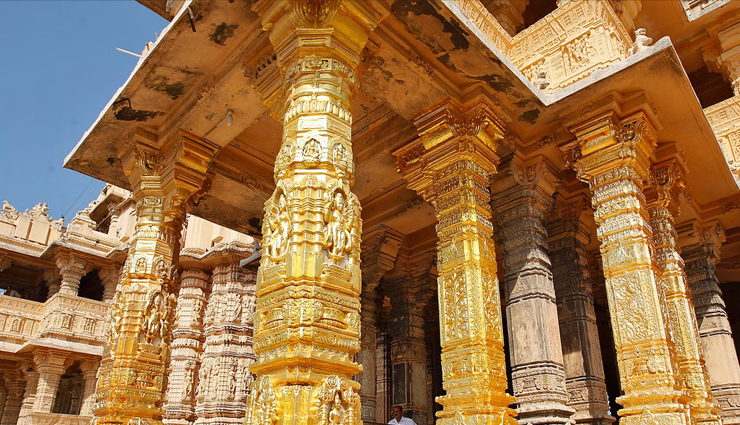
- Architecture Styles: The temple's architecture reflects a blend of various styles, including Chalukyan, Rajput, and Solanki styles. The original Chalukyan style featured elements like stepped pyramidal spires, intricately carved pillars, and embellished doorways.
- Materials Used: The temple is primarily constructed using locally available materials like sandstone and limestone. These materials are not only durable but also allowed for intricate carvings.
- Sculptural Details: The temple's exterior is adorned with sculptures depicting various deities, celestial beings, animals, and floral motifs. These sculptures not only add aesthetic value but also carry religious and symbolic significance.
- Entryways: The temple entrances often feature impressive doorways with ornate designs and guardian figures. These doorways serve as thresholds to the sacred space and are intricately carved.
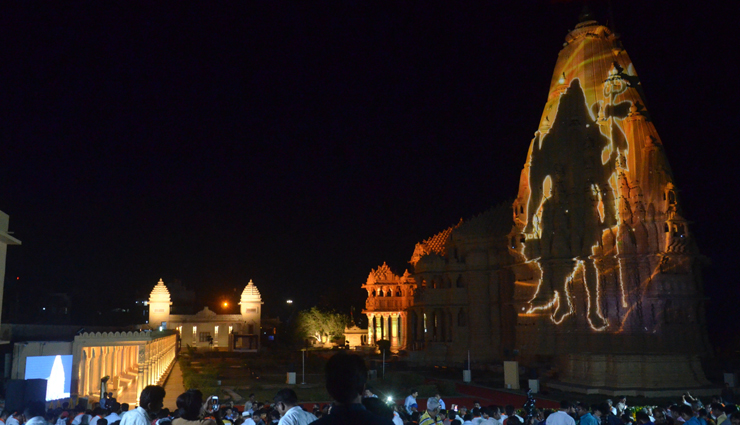
- Sound and Light Show: As part of its modern amenities, the temple complex offers a sound and light show that narrates the temple's history, cultural importance, and its connection to Hindu mythology. This show adds an immersive dimension to visitors' experience.
- Restorations: The temple has undergone several rounds of restoration to maintain its historical authenticity while ensuring structural stability and safety for visitors.
- Coastal Location: The temple's proximity to the Arabian Sea adds to its aesthetic appeal, and the sea breeze contributes to the temple's serene atmosphere.
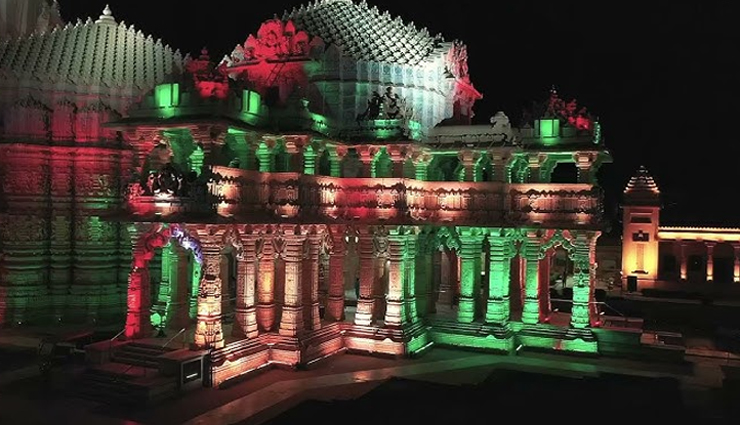
History of Somnath Temple
The history of the Somnath Temple is rich and storied, marked by a series of destructions and reconstructions, as well as its enduring significance in Hindu culture. Here's an overview of its historical journey:
- Ancient Origins: The origins of the Somnath Temple trace back to ancient times, with references in various Hindu scriptures and legends. It is said that the original temple was built by Lord Soma (the Moon God) himself out of gold.
- Early Dynasties: The temple gained prominence during the reign of various dynasties like the Mauryas, Chavdas, and Chalukyas. It served as a major pilgrimage site and a center of cultural and religious activities.
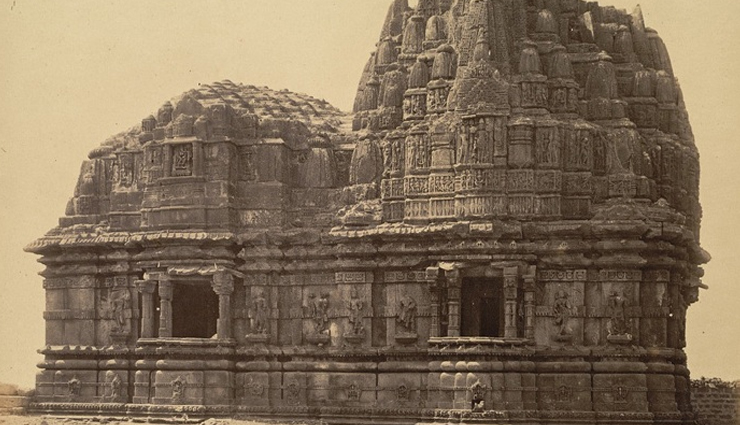
- Destruction by Mahmud of Ghazni: In 1026 CE, Mahmud of Ghazni, a ruler from Central Asia, invaded the temple and looted its riches. This event marked the first recorded destruction of the temple. The attack is said to have been motivated by the temple's wealth and symbolic significance.
- Multiple Reconstructions: After each destruction, the temple was rebuilt by successive Hindu rulers. The Chaulukya dynasty, in particular, played a significant role in the reconstruction and renovation of the temple.
- Destruction by Alauddin Khilji: In 1299 CE, Alauddin Khilji, a ruler of the Delhi Sultanate, attacked and destroyed the temple once again. This marked the second major destruction in the temple's history.
- Reconstruction by Gujarat Sultans: The Gujarat Sultans, who succeeded the Delhi Sultanate, displayed a unique approach by supporting the rebuilding of the temple alongside their own Islamic architecture.
- Destruction by Aurangzeb: One of the most significant episodes in the temple's history occurred in 1706 CE when Mughal emperor Aurangzeb ordered the temple's destruction. This marked the third major destruction, and the temple was razed to the ground.
- Maratha Reconstruction: After Aurangzeb's reign, the Marathas took control of the region and undertook the reconstruction of the temple in the early 18th century.
- Post-Independence Reconstruction: Following India's independence in 1947, efforts were made to reconstruct and restore the temple once again. Sardar Vallabhbhai Patel and K. M. Munshi played key roles in this endeavor.
- Modern Times: The current temple stands as a result of extensive restoration and rebuilding efforts. It remains a significant pilgrimage site for Hindus and a symbol of the resilience of Indian culture and heritage.





